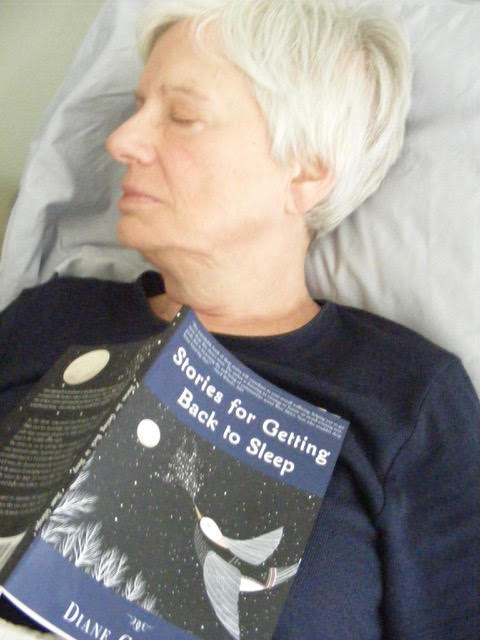One of my older women friends said, laughing, “It’s not the sleeping pills that I’m addicted to, it’s the sleep.”
Several months ago, the New York Time Magazine (March 16, 2018) featured an essay by Paula Span entitled “A Quiet Drug Problem Among the Elderly.” It caught my attention because I know so many older women who, like my friend above, are reaching for a sleeping pill on a regular basis in the middle of the night.
I once did too. Until …
Several years ago, I read about the Adult Changes in Thought study conducted by a team of researchers from the University of Washington. It followed some 3,500 Group Health participants, average age 73, and showed a link between anticholinergic drugs and dementia, including Alzheimer’s. Anticholinergic drugs are found in many products commonly used as sleeping aids, such as Benadryl, Tylenol PM and Advil PM.
And now there are more even more serious warnings about sleeping pills (e.g., https://www.health.harvard.edu/sleep/learn-the-risks-of-sleep-aids)
I stopped taking sleeping pills. My mother died of Alzheimer’s.
Thus began my exploration of how to get back to sleep without a pill after awakening in the middle of the night. An educational psychologist convinced of the power of narrative, I began to examine my middle-of-the-night storyline. And the first line of the story? “Oh no, I am awake again at 2 AM.” From there, without a pill, the tension in the story escalated. My mind raced anxiously thinking about the next day’s meetings or of yesterday’s tense conversation with a colleague. The story’s denouement? “I’ll never get back to sleep.”
So I had developed a habit, a patterned response to sleeplessness, and realized that I had to learn a new way to go back to sleep. I tried various strategies, such as listing relaxing music or breathing deeply, but then I decided to tell myself a different story, with a different outcome. That revision involved creating an alternative narrative sequence that I could engage in as soon as I got up, went to the bathroom, and crawled back in bed.
Here is the sequence from a story that is available on my website: dianemgillespie.com.
Imagine lying on a softly cushioned lounge chair on a beach: rub oil on your skin as you feel the hot sun relaxing you, remember shivering in the bone-chilling cold back in the Midwest, turn over so your whole body gets warmed by the sun, listen to waves gently lapping, put worries on the sailboat out on the horizon, sink into the soft-cushioned lounge chair and fall into a nap. In the middle of the night, the story unfolds like a movie in your mind. No lights, no music, just the slow evolution of events that leads you back to sleep. I began to call them my sleep scenarios. I kept developing new ones until I had a repertoire to draw on. And more often than not they worked.
“Could you write one of them up for me?” my sleeping pill friend asked me when I told her about them.
So began my book Stories for Getting Back to Sleep. Learning a new behavior isn’t as easy as swallowing a pill. I encourage readers to think of taking up sleep scenarios as a kind of practice. A scenario needs to be rehearsed during the day so that it can be at the ready at night.
I was motivated to share these stories because women especially are called on to care for others and need adequate sleep. Additionally, many of us care about social justice. We are activists who need all the joy, energy and alertness that we can muster during our waking hours.
I know that I do.
I volunteer for the nonprofit Tostan, an award winning, human rights based nonformal education program based in Senegal, West Africa (Tostan.org). Their community empowerment program promotes the well-being of those in rural, resource-poor communities, especially of girls and women. I have seen firsthand how they have used their Tostan education to create healthy, democratic, inclusive communities with great joy, energy and alertness.
All profits from the book will go to Tostan.
Stories for Getting Back to Sleep is available online and can be ordered through your local bookstore.
Diane Gillespie
Emerita Professor, University of Washington Bothell
Tostan Volunteer


